Rod Library (1963)
Beginning in May 1911, the building now known as Seerley Hall served as the library of the Iowa State Teachers College (currently the University of Northern Iowa). For many years that building, with its classic style and large second floor reading room, functioned well. But by the 1950s, the building was showing its age. The book collection had expanded far beyond the building's intended 100,000 volume capacity. Also, the building was not well adapted to the growing number of new media formats. Nor was it large enough to accommodate the projected significant growth in college enrollment that would come when the Baby Boomers arrived in the 1960s.
At least as early as 1956, Marshall Beard, who would come to be in charge of campus planning, stated that the college intended to convert Seerley Hall into a classroom building and to build a new library. By 1960, the site for the new library seems to have been settled: it would be between Wright Hall and the East Gymnasium. This site selection seems to have provoked little controversy at the time. It was clearly located right in the center of the instructional buildings of that day. In retrospect, however, there might be some regret that that particular site was chosen, because it began the filling in of a very pleasant and open green space that stretched from Lang Hall and Seerley Hall in the east clear back to the West Gymnasium, with the Campanile as an attractive centerpiece.
In spring 1961, the library staff, headed by Donald O. Rod, surveyed students to see what they wanted in a new library. In June 1961 the General Assembly appropriated $1.5 million for the new building. By October 1961, plans were well under way. The library was projected to be built in three phases. The architects for the project were Thorson and Brom, of Waterloo, but the college was fortunate to have the additional expertise of Mr. Rod, who was trained in architecture as well as library science. Officials hoped that ground could be broken for the new building in spring 1962. The new library would include seating for a thousand students, with individual carrels for many more. It would include small study rooms and listening facilities. It would hold 275,000 volumes, and, perhaps as important as anything else to the students of that day, it would be air-conditioned. This was especially welcome to students and faculty who had spent sweltering spring and summer days in the Seerley Hall reading room. It would even include a "Reading Garden", a sunken, recessed area in front of the new building. The building would feature modular construction: that is, columns and beams, rather than walls, would bear the load. This would enhance the flexibility of the building to respond to changes over the years. The building would include quarters for the Department of Library Science. Officials hoped that the building would be complete by fall 1963.
Soil tests at the building site got under way in November 1961. The Board of Regents awarded contracts for building construction in September 1962. Henkel Construction Company of Mason City won the general contract; Young Heating Company of Waterloo won the mechanical contract; and See Electric Company of Waterloo won the electrical contract. The building, measuring 235 feet X 127 feet and including about 90,000 square feet of space on three levels, would be similar in design to Russell Hall. The groundbreaking ceremony was held October 8, 1962, and excavation got under way shortly thereafter. Several short strikes involving workers on the project hampered initial progress on the building.
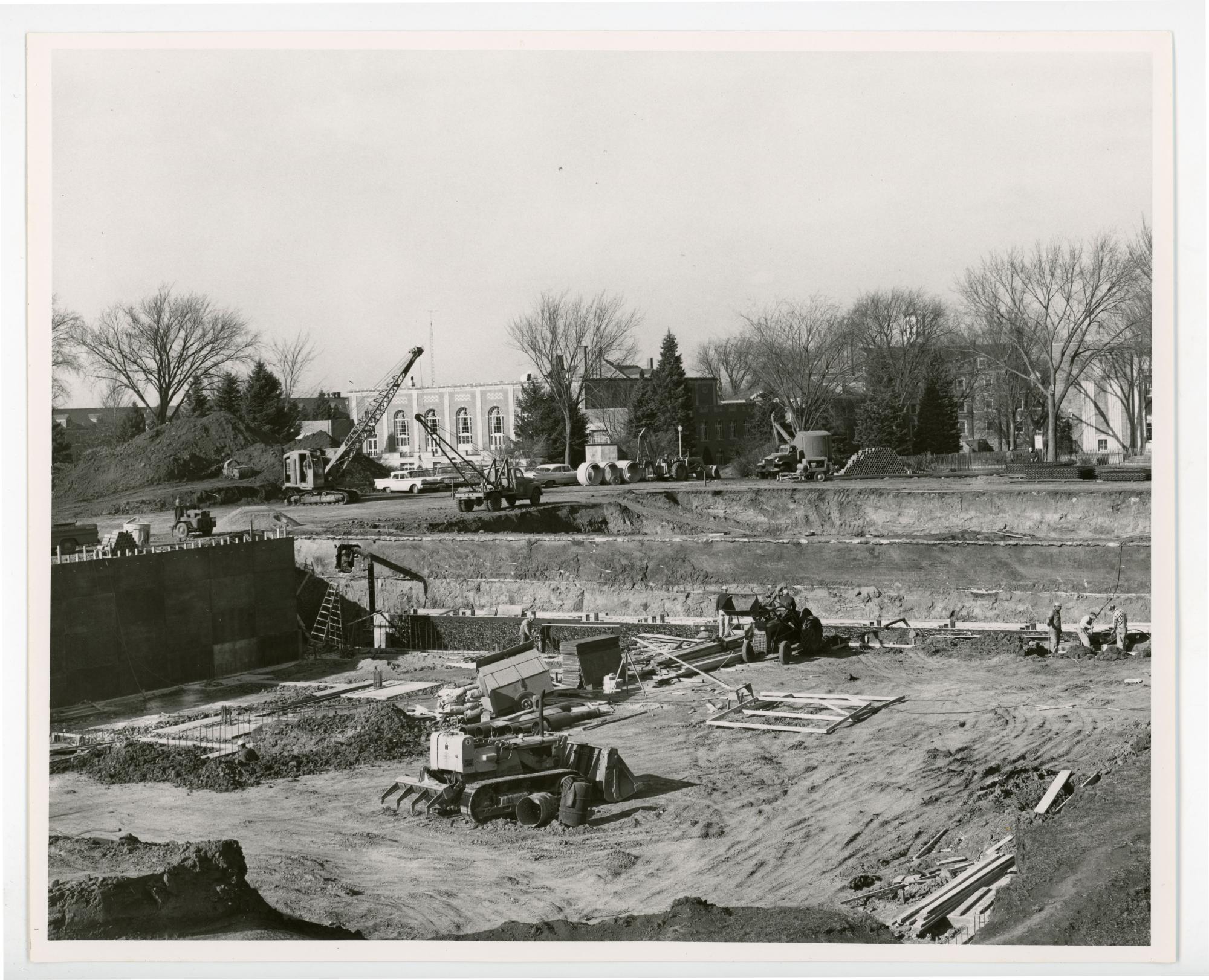
But the labor difficulties were settled, and winter weather cooperated, so that by January 1963, Mr. Rod could say that work was back on schedule. The lower level had been enclosed and work was progressing on the floor of the main level. Before the first phase of the new library was even close to completion, Mr. Rod was sowing the seeds for the next phase of library construction. In June 1963, he said, "The day the new library is ready for use it will be overcrowded." He noted that rapidly growing enrollment and the changing curriculum made it nearly impossible to keep up with projected needs. The first phase was being constructed to allow for easy expansion to the west. Completion of Phase I was set for April 1964.
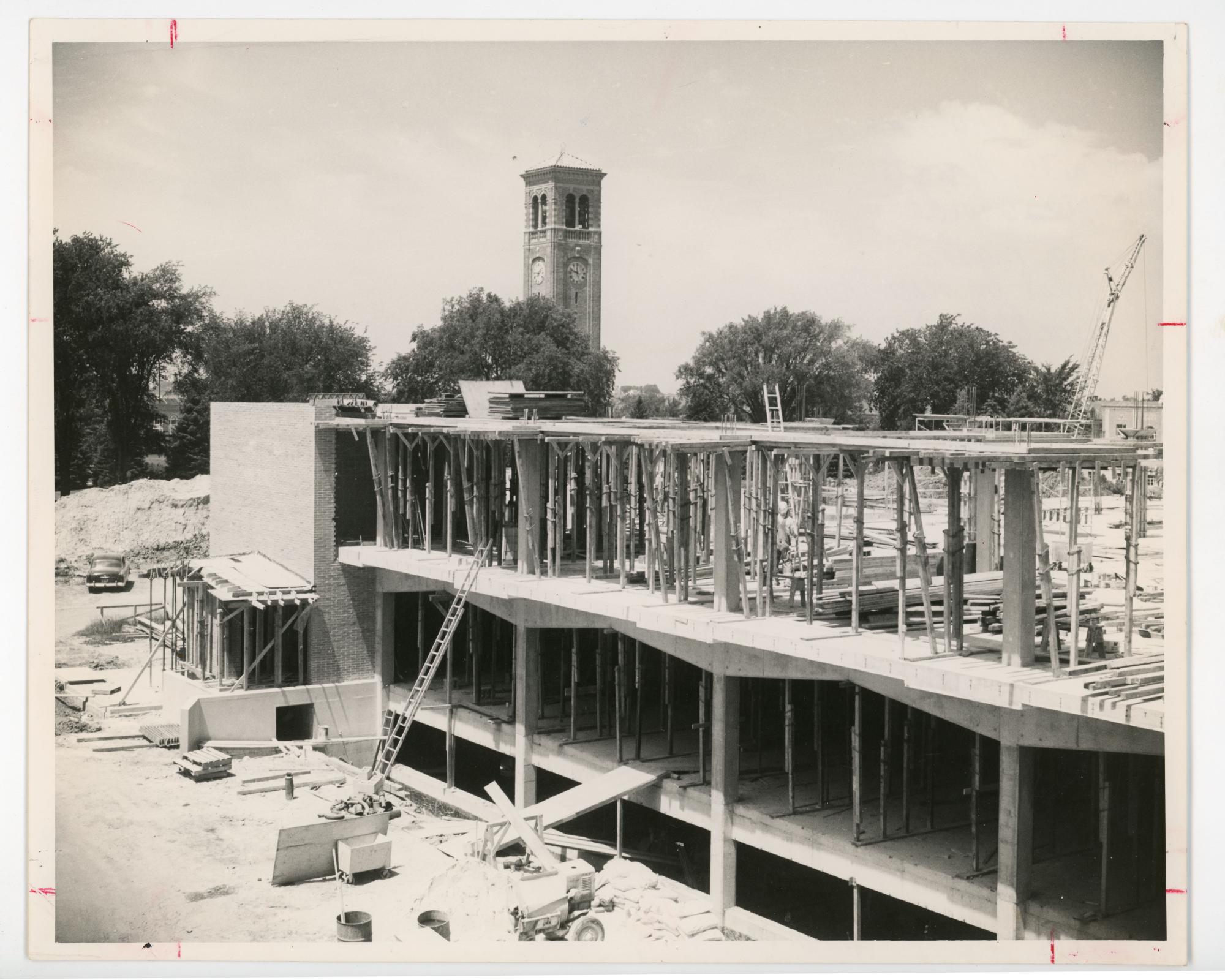
The building was finally completed in July 1964. Library staff and professional movers shifted the 210,000 volume collection from Seerley Hall to the new building in August and early September, so that the building was ready for students on September 14, 1964. The cost of the building and equipment was about $1.7 million, with $1.5 million from the General Assembly and the remainder from donations and supplementary funds.
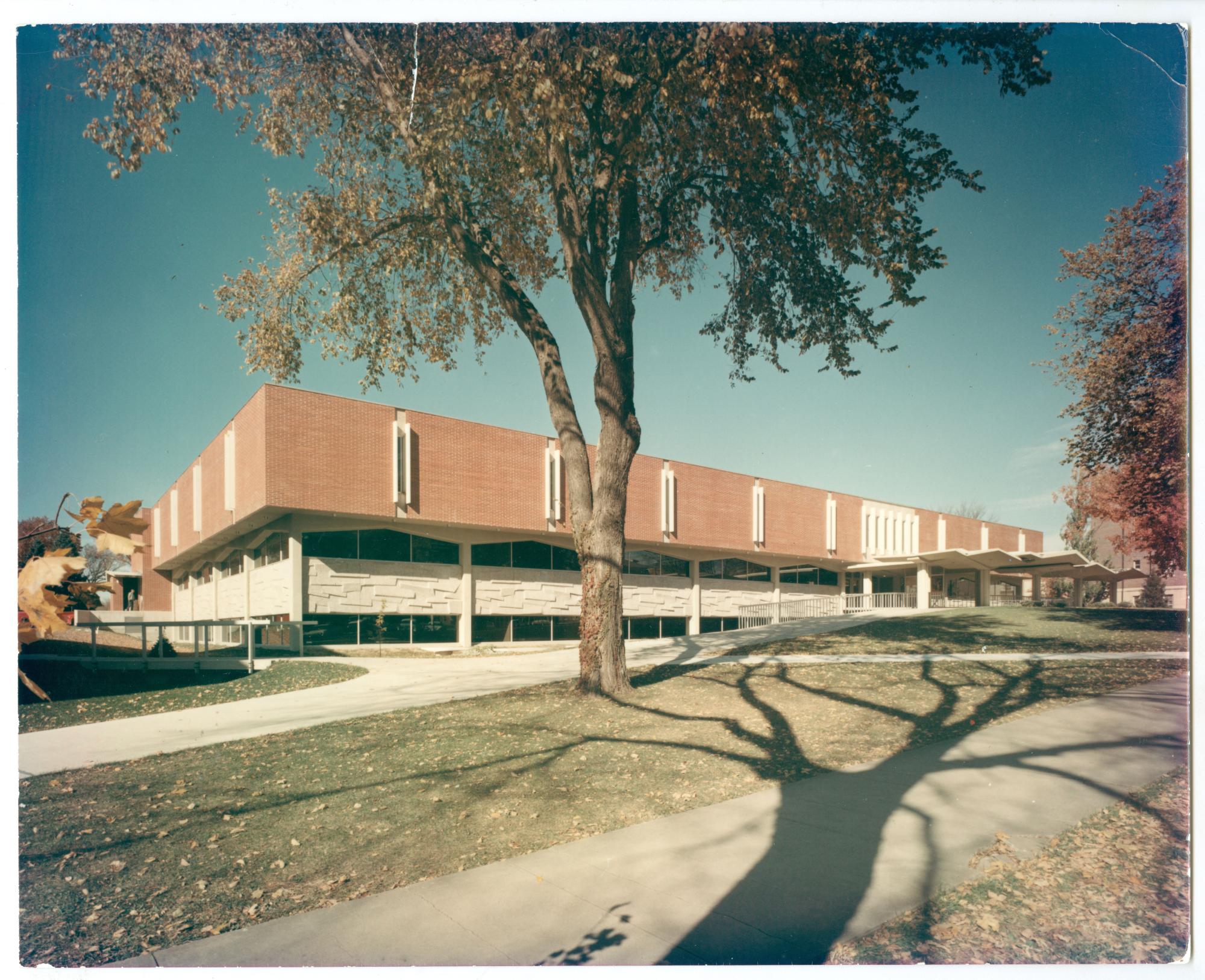
By the beginning of 1965, just about all of the furniture, equipment, and services, with the notable exception of the music collection, were in place. The library offered photocopy service at ten cents per copy, graduate study rooms, discussion rooms, and a browsing room. About three or four thousand students used the building daily. An open house for the new building, as well as the newly-completed Hagemann Hall, the Regents Dining Center, and the Administration Building (now Gilchrist Hall), was held on October 10, 1965.
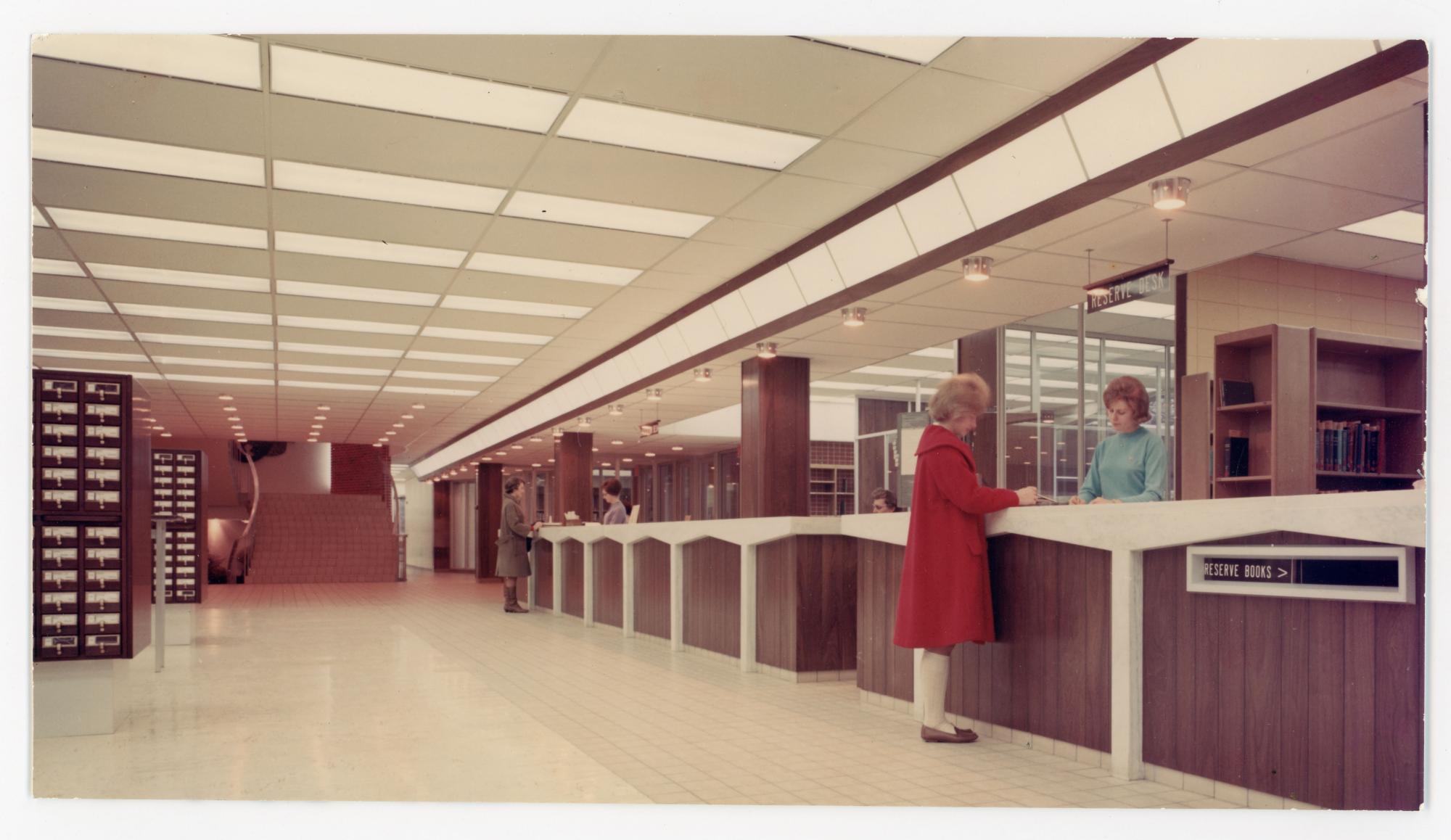
As early as August 1966, the college asked the Board of Regents for $2 million for Unit II of the library. However, it was not until December 1970 that the Regents authorized the university to begin negotiations with an architect for what was by then a $3 million project. In April 1971, the Regents approved the selection of Thorson, Brom, Broshar, Snyder of Waterloo for architectural services. Plans were complete and on display by November 1971. Funding for the project would come from academic revenue bonds authorized by the General Assembly. In October 1972, the Regents approved contracts for the library addition. John G. Miller Construction Company of Waterloo was the general contractor, Young Plumbing and Heating Company of Waterloo was the mechanical contractor, and Paulson Electric Company of Waterloo was the electrical contractor. The addition would add 82,300 square feet to the library, increase seating to about 2100 students, and bring the book capacity up to at least 700,000 volumes. The project would also include some renovation of the existing structure.
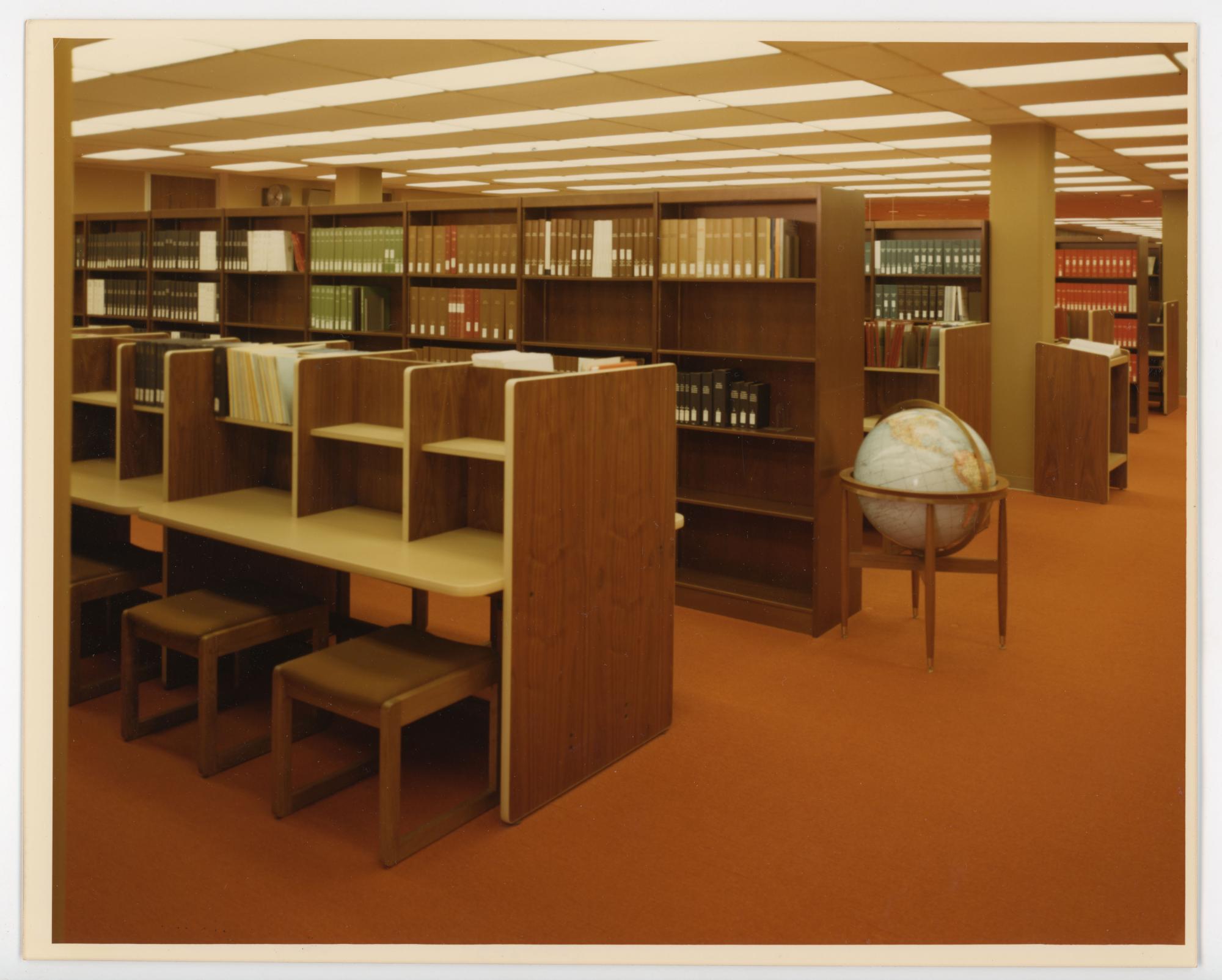
Work began on Phase II in March 1973. Essentially, Phase II was a mirror image of Phase I. In May, the main entrance to the library was closed for the summer so that alterations could be made. Officials hoped that the addition would be complete by September 1974, but the construction itself and delays in ordering furniture slowed things down. Mr. Rod hoped that he and his staff would spend much of the Christmas 1974 vacation supervising the final touches and moving the collections.
The addition was indeed ready for students in January 1975. It offered greatly expanded bookstacks and study space as well as separate quarters for Documents and Maps, Art and Music, and Special Collections and University Archives. The student newspaper, the Northern Iowan, raved about the addition in an editorial. The editorial thanked the General Assembly, the Regents, the administration, and just about everybody else who had had responsibility for the work. It went on, "Nothing appears to have missed the designers' eyes--aesthetics, acoustics, and comfort are more than abundant in every corner." Well known Iowa author Frederick Manfred was the keynote speaker at the dedication of the addition on May 6, 1976. In a moving address, Mr. Manfred talked about the value of books and reading in his life.
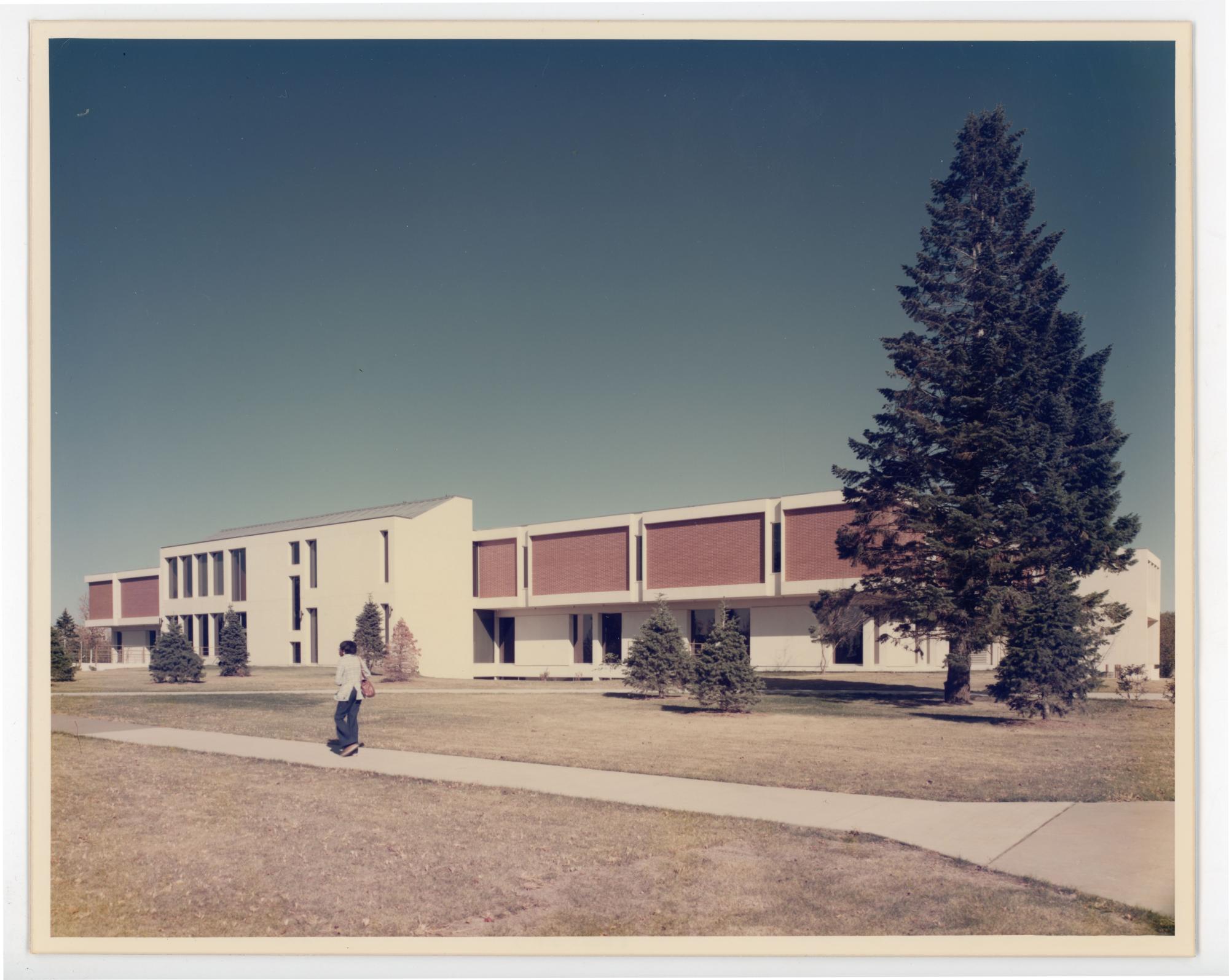
A mild controversy arose in 1980, following the death of the Josef Fox, a revered professor of philosophy and humanities at the university for over thirty years. At that time, a group of Professor Fox's friends and students circulated a petition asking that the Library be named in honor of Professor Fox. They cited the wide-ranging and deep influence that Professor Fox had had on generations of UNI students. At least privately, other people were less enthusiastic about the possibility that the Library might be named for Professor Fox. Some of Professor Fox's ideas, or the way in which he expressed them, had aroused considerable opposition and controversy over the years. In any case, the university administration took no action on this matter.
Ultimately, in April 1986, the building was named the Rod Library to honor Donald Olaf Rod, who served as director of the UNI Library from 1953 through 1986. Mr. Rod was instrumental in the development and design of the library and its program of services during those years. In 1953, when he arrived on campus, the library had an operating budget of $70,000, including a book budget of $15,000. The book collection numbered 150,000 volumes. When he retired in 1986, the budget was $2.5 million, with $759,000 earmarked for books. The collection was over 600,000 volumes.
In spring 1989, the General Assembly approved $15,000 to begin planning for a $7 million library addition, which would include space for the Educational Media Center. In November 1989, the Regents selected Herbert, Lewis, Kruse, and Blunck of Des Moines as the architect for the project. Planning got under way, but, due to difficulties in the Iowa economy, construction funding was slow to follow. Not until June 1993 were the Regents allowed to sell $7.4 million in academic revenue bonds to finance the work.
Work began on Phase III of the Rod Library in July 1993 with a formal roof beam raising ceremony held on August 3. Story Construction Company of Ames was the general contractor. The target completion date was summer 1995.
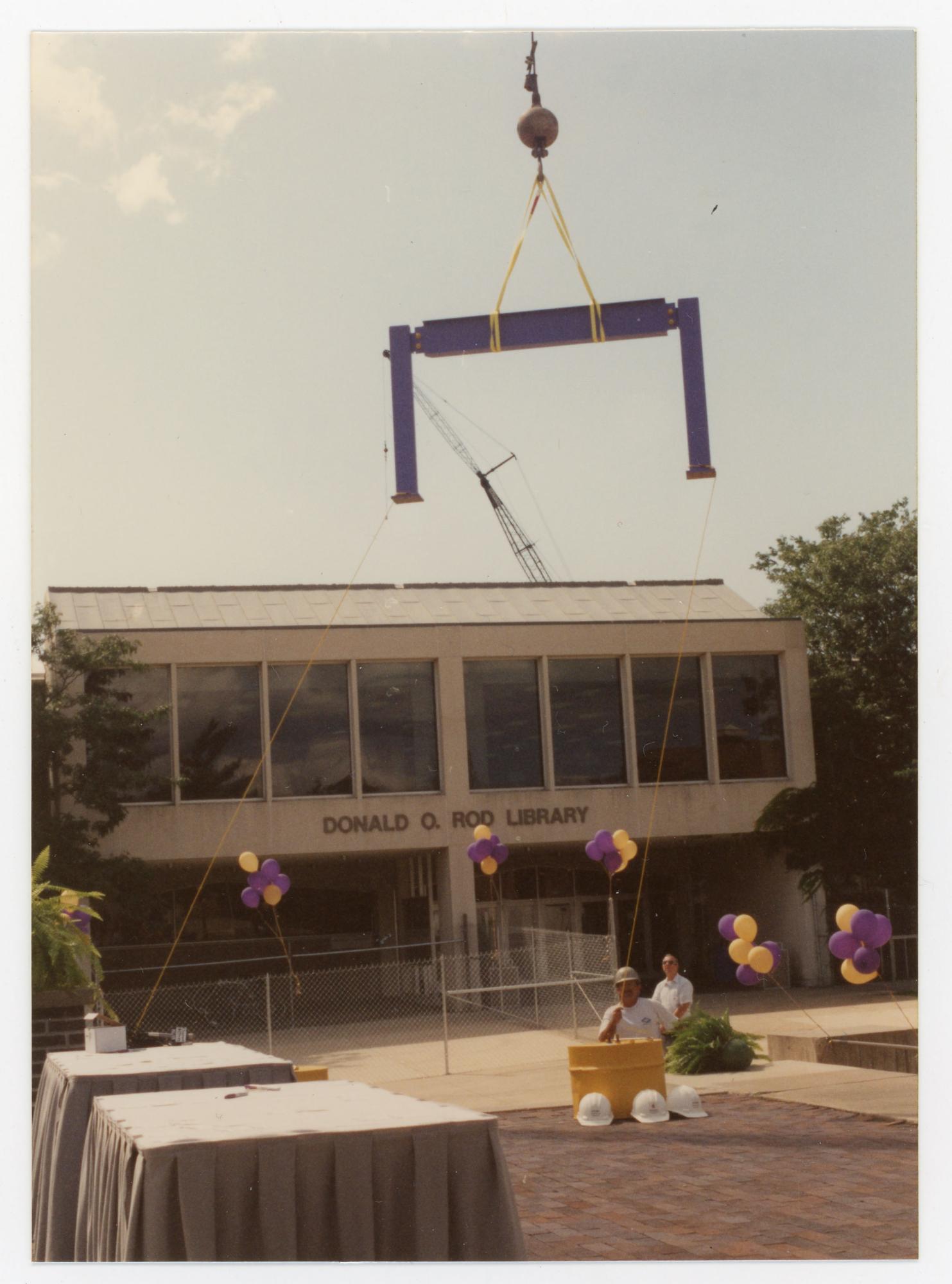
The project would consist of constructing an additional level on top of the existing building and extensive remodeling of existing library facilities. Exterior and interior modifications, especially in window design and lounge layout, were also included. Instead of including space for the Educational Media Center, the fourth level addition would house the Center for the Enhancement of Teaching, as well as bookstacks and study space. Several facilities would be shifted around the existing three levels. The Documents and Maps Collection would move from the third to the second level. The Youth Collection would move from the first to the third level. And Special Collections and University Archives would move from the second to the third level. All periodicals services would be consolidated on the first level.
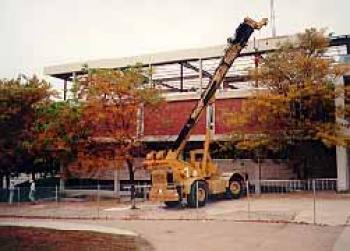
Work went well, despite the complication of doing both new construction and renovation simultaneously. In fact, Story Construction supervisor Martin Miille cited this complication as an advantage. When his crews faced lulls in one phase of their work, they could refocus their efforts on the other phase. At one point, optimists even predicted that the work would be done ahead of time. Much of the renovation work was noisy, dusty, and disruptive. Still, close cooperation between Story Construction and the library staff helped to keep inconvenience to library users at a minimum. The library was closed just a single day, and that was during an interim period, during the entire project, which was completed in summer 1995.
On December 15, 1995, Lieutenant Governor Joy Corning, a UNI alumna, spoke at the dedication of the addition. The project added space for 250,000 additional books, four hundred study spaces, and twelve group study rooms.
In 1997, a new Copy Center was added to the lower level of the building. Also in the lower level, in the summer of 1998, moveable, compact shelving was installed to allow for greater numbers of periodicals to be shelved in that area.
Compiled by Library Assistant Susan Witthoft; edited by University Archivist Gerald L. Peterson, July 1996; substantially revised by Gerald L. Peterson, with research assistance by Student Assistant Jacki Ellenwood and scanning by Library Assistant Gail Briddle, February-March 2004; last updated, March 22, 2012. photos updated and citations added by Student Assistant Nicholas Steffens, December 9, 2021.
